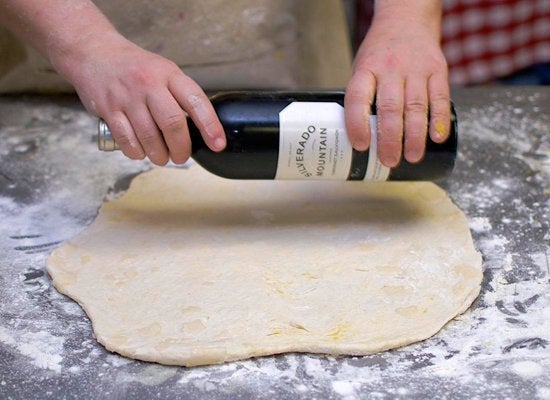Occasionally, we put down our own knives and get invited to other people’s homes for dinner. We love to see the tricks and techniques our friends employ in their own kitchens, so are always keen to hang around the cooking space and check things out. Unfortunately, we’ve noticed a disturbing trend: some of you guys are trying to sabotage yourselves with your cutting boards.
There are a few indispensable tips and tricks we’ve picked up along the way, that we hope you guys will shout out into the universe. If we all use the best cutting board for the job, in the right shape, on the right surface, our cooking will go from great to excellent. Plus, you’ll be calmer, less likely to cut yourself, have plenty of room and be sure you’re never cross-contaminating any of your ingredients. Doesn’t that sound like a significantly less stressful cooking experience? We think so too!
1. Put a damp towel under your cutting board to keep it from slipping.
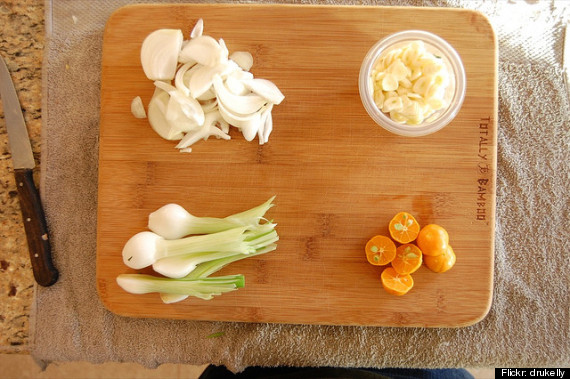
If you take one piece of advice away from this article, let it be this one. We are baffled by the number of people who do not do this. Giving your cutting board a sturdy surface to rest on protects you from the cutting board slipping out from underneath the pressure of your chopping. Cutting board slips lead to cutting board accidents, which no one wants. We like to fold a damp kitchen cloth in half and just set our wooden cutting board on top. It makes us feel extra secure, which makes our knife skills extra precise.
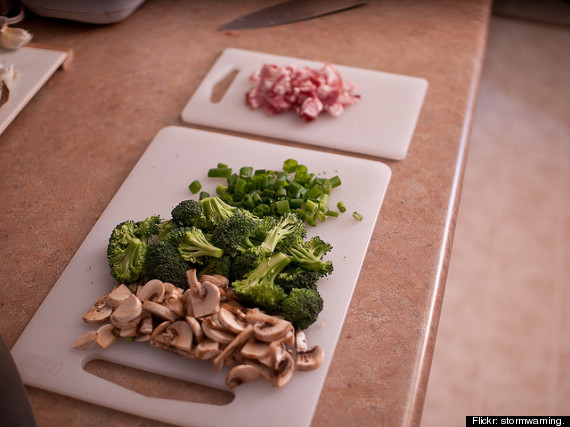
See these? When that plastic meets your countertop, every ounce of pressure you apply while chopping will urge the plastic to slide right out from under your knife, putting your hands in harm’s way. The towel trick will increase your confidence and change your kitchen life. We promise.
2. Make sure your cutting board is big enough to get the job done.

These tiny plastic cutting boards that we all have stashed away in a cabinet are good for a few very specific things ― slicing citrus for drinks, prepping a quick garnish at the last minute, dicing up bacon to toss into a pan (since you never want to put raw bacon on the cutting board you’re using for everything else). A tiny cutting board is no place for dicing an onion, trimming meat, or really any serious cooking prep at all.
Please, please, please never do anything like this:
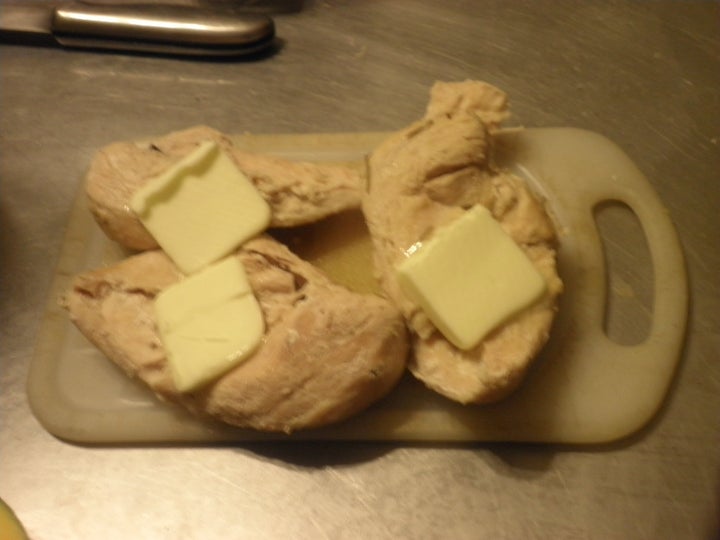
(Photo credit: Luca Masters/Flickr)
In this same vein, stay away from oddly-shaped cutting boards. The more surface area you have, the more control you have over your knife skills and the more organized you can be.
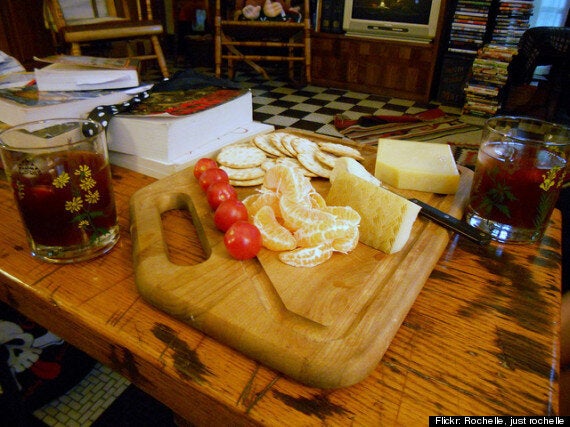
Why cut the corner off?

No.
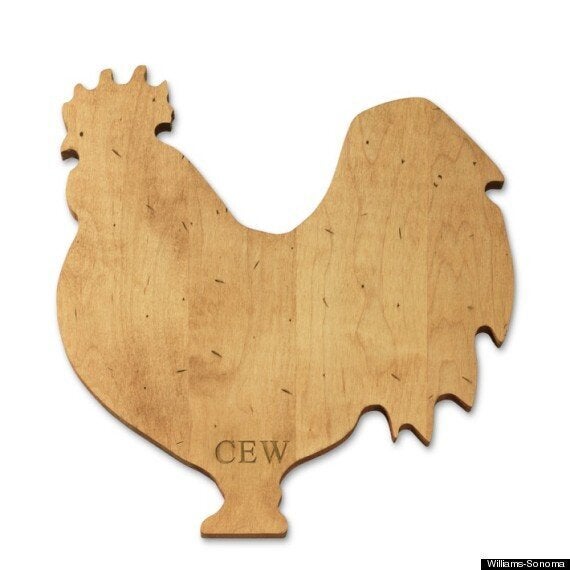
NO.
3. Use the right material for the job.
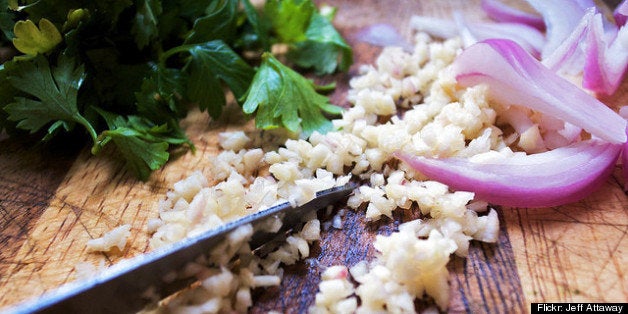
For 75 percent of your chopping needs, a large, sturdy wooden or bamboo cutting board is the absolute best. It doesn’t dull your knives as quickly as plastic, it stays in place well and foods won’t slip on its surface.
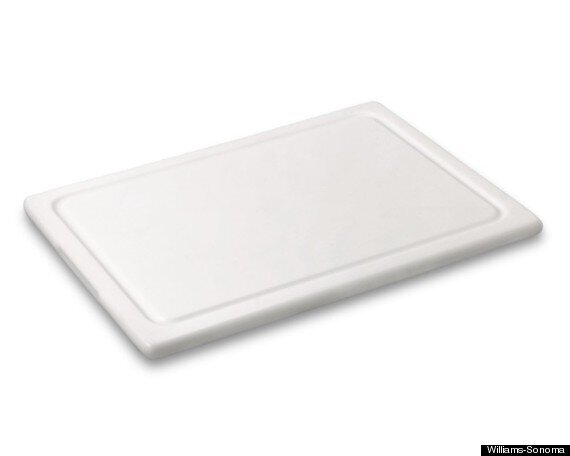
You should also be sure to have a sturdy plastic cutting board on hand for prepping meat and fish. Plastic is better than wood for these types of foods, because bacteria from raw meat and seafood can get trapped in the grain of the wood and make you sick. Since plastic is non-porous, when you wash the surface of these boards, they get thoroughly cleaned for next time.
These are the only two kinds of cutting boards your kitchen needs. Do not, we repeat, do not use a glass cutting board for anything but a serving platter. Whoever thought of this idea was confused.
To clarify:
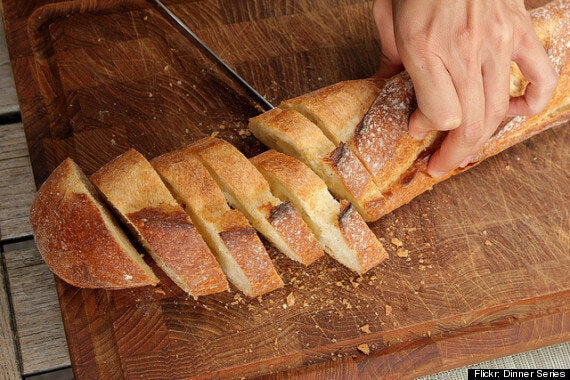
Yes.
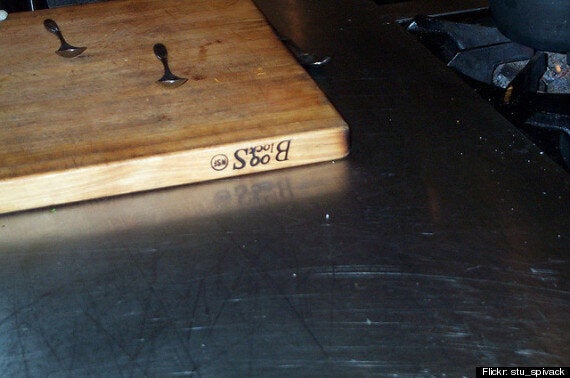
YES.

NO.
